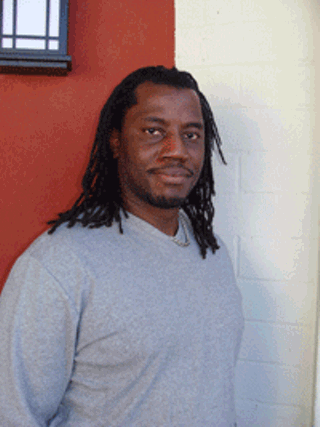When did you start your position as director of African-American student affairs?
I started in July 2007, but prior to that, for three years, I was coordinator for academic support for the UA football team. Prior to that, I was at the University of California at Berkeley, and I finished my Ph.D. (in language literacy and culture) there in 2004. I worked there in academic support with student athletes as well.
What made you consider working as director of the AASA?
It's a chance for me to work primarily with African-American students here on campus in a different way. We're trying to turn the perception of what we do here from a cultural to an (academic) retention unit. It's not just important for me to provide cultural events and social things, but what I really want to do is make a mark in terms of academic support.
What can make it difficult to be an African-American student on a campus in Tucson?
There are a couple of things that make it difficult here, especially at the UA. Here in Tucson, one of the things you don't find that you have in larger cities is the place where African Americans live and experience the city. There's nothing like that here; there's no one neighborhood. ... We're very dispersed in Tucson, in every corner of the city, and in some ways, that could be a good thing, but not when you're looking for community.
How does the AASA work with those students?
One thing it provides for students is a place they can call home. ... When you want to spend time with folks who experience life the same way you have, and (you) have a lot in common with, it can provide students with that space. But one of the things we're trying to do is make it inclusive. Our name may be African American Student Affairs, but we want every student to know they are welcome here. We're primarily going to discuss things that are specific to the African-American community, but we think everybody should be involved in those discussions.
How do you accomplish those discussions?
One of the things I'm very proud of is our Black History Month schedule. This is an international and academic lectures series, and that's the kind of thing we want to provide that is part of an academic-retention model for African-American students and, really, for all students.
What's your big vision for the AASA?
The big vision for me is to increase the opportunities for African-American students to engage and participate on campus. I want all students on campus to see what's available to them and know they have access to what every other student has access to. One thing that happens ... is that students don't feel that they can engage their campus. Talk to students around here, and they don't feel that outside of their lab, classroom or their adviser's office that they can engage much of what goes on, on this campus. I want them to know that every office and every resource is available and open to them. The folks who work (at the UA)--the staff, the faculty--they want to have more contact with African-American students. That's my goal.
Isn't part of that making sure those offices are welcoming and that their doors are wide open?
I spend much of my time here away from the office trying to forge those relationships. And for me, really, they're not even new relationships, because when I was in athletics, it was easy to go and meet people from across campus. ... One of the things I brought to this job was all of the relationships I had with people across campus. Now I talk to them and say, "You're closely involved with African-American students through athletics, but here is a larger group of African-American students. Most African-American students are not athletes. And they want to be just as engaged."





